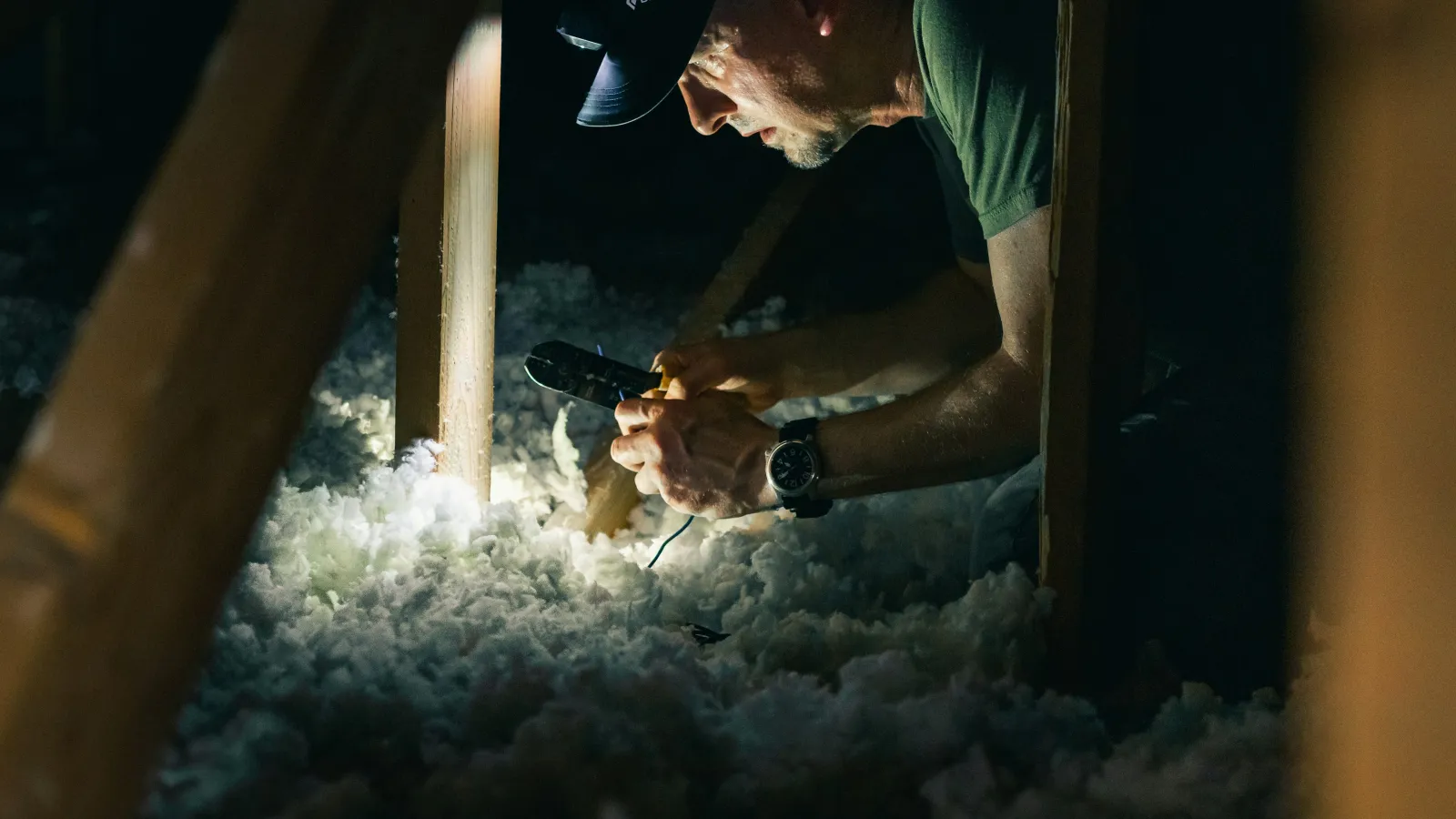Insulating your attic ceiling is one of the most effective ways to improve your home's energy efficiency, comfort, and overall air quality. Whether you're dealing with old fiberglass insulation or dusty cellulose, upgrading to modern solutions can make a big difference in both energy bills and indoor air quality. In this guide, we'll cover the best insulation options for your attic ceiling, the process of extracting old insulation, installing new clean loose-fill fiberglass insulation, and why air sealing is essential for maximizing the benefits of your insulation upgrade.
Why Insulating Your Attic Ceiling Matters
Before diving into the specifics of insulation types, it's important to understand why your attic ceiling needs proper insulation. Your attic is one of the main areas where heat escapes in the winter and where it infiltrates in the summer. Without adequate insulation, your HVAC system has to work overtime, leading to higher energy bills and an inconsistent indoor temperature. Proper attic insulation not only regulates your home's climate but also contributes to a healthier living environment by preventing moisture buildup, which can lead to mold growth.
Another reason insulation is critical is the comfort it brings to your living space. An under-insulated attic causes temperature fluctuations that affect how comfortable your home feels year-round. By upgrading your attic ceiling insulation, you can maintain more consistent temperatures, reduce drafts, and even extend the life of your HVAC system.
Common Types of Attic Insulation
When it comes to attic insulation, there are a few main types to consider, each with its own set of benefits and drawbacks. Let's explore these options.
Fiberglass Batt Insulation:
One of the most common forms of attic insulation, fiberglass batt is pre-cut and designed to fit snugly between attic joists. While it's easy to install, it might not offer the best coverage, leaving gaps around pipes, wiring, and other attic penetrations.
Blown-In Fiberglass Insulation:
Blown-in fiberglass insulation is a popular option for homeowners who want to ensure full coverage in their attic. It fills in gaps and creates a more uniform insulation layer compared to batt insulation. This is especially useful for homes with irregularly shaped attics or hard-to-reach areas.
Spray Foam Insulation:
Spray foam is another excellent option, known for its ability to act as both an air barrier and an insulator. This product expands upon application, filling in cracks and gaps in the attic ceiling. However, it can be more expensive than other insulation options.
Cellulose Insulation:
Made from recycled paper products, cellulose insulation is often used for attic spaces. It's typically blown in, offering good coverage, but it can settle over time, losing some of its effectiveness. Additionally, older cellulose insulation may contain dust and dirt, affecting indoor air quality.
Why Extract Old Insulation?
Old insulation, particularly fiberglass or cellulose, can become less effective over time due to compaction, dust buildup, or damage from pests. If your attic insulation is several decades old or has been compromised, it may be time to extract it before installing new insulation.
Removing old insulation can significantly improve the indoor air quality of your home. Over time, insulation can harbor dust, mold spores, and even rodent droppings, all of which can reduce the air quality inside your home. In addition, removing outdated insulation creates a clean slate for better-performing materials, allowing you to start fresh with a more energy-efficient solution.
The Benefits of Blown-In Fiberglass Insulation
Blown-in fiberglass insulation is one of the top choices for attic ceilings because it offers many advantages:
Complete Coverage: Unlike batt insulation, blown-in fiberglass fills every nook and cranny, ensuring consistent insulation coverage throughout your attic. It helps prevent heat from escaping through gaps and cracks that often go unnoticed.
Energy Efficiency: Fiberglass is a poor conductor of heat, making it a very effective insulator. When installed at the recommended thickness (around 17+ inches to achieve an R-value of 49), it drastically reduces heat loss, helping you save on heating and cooling costs.
Fire Resistance: Fiberglass is naturally non-combustible, making it a safe option for homes concerned about fire hazards.
Long-Lasting: Fiberglass insulation doesn't settle over time like cellulose does. This means it retains its insulating properties for many years, providing a long-term solution for your attic.
The Importance of Air Sealing
While upgrading your attic ceiling insulation is a crucial step, it's equally important to air seal any penetrations between your living space and the attic. Air sealing prevents air leaks that can undermine the effectiveness of even the best insulation. Without air sealing, conditioned air from your home can escape into the attic, making your insulation less effective and your HVAC system work harder.
Air sealing is needed in areas like recessed lighting fixtures, plumbing vents, and electrical wiring, as these often have gaps that allow air to escape from the living space into the attic. Sealing these openings helps prevent air leakage and improves insulation efficiency.
Proper air sealing helps maintain the thermal envelope of your home, keeping conditioned air inside where it belongs. This step can improve the overall performance of your insulation by preventing drafts and reducing heat loss.
The Process: From Old to New Insulation
To give you a clear idea of how the attic insulation process works, here's an overview:
Assessment: The first step is assessing the current insulation in your attic to determine its condition. If the insulation is old, damaged, or ineffective, it's time to remove it.
Extraction: Old insulation is carefully extracted, whether it's fiberglass batts or dusty cellulose. This step ensures a clean space for new insulation, eliminating contaminants and debris.
Air Sealing: Before adding new insulation, air sealing is performed to close off any gaps or penetrations between the attic and living space. This ensures that your new insulation will perform optimally.
Blowing in New Insulation: Once the old insulation is removed, and the attic is air-sealed, the new insulation is blown in. Clean, loose-fill fiberglass is installed, filling every corner of the attic and reaching a thickness of 17+ inches to achieve an R-49 rating.
Final Inspection: After the insulation is installed, a final inspection is performed to ensure complete coverage and proper installation.
Conclusion
Investing in proper attic ceiling insulation is a smart move for homeowners looking to improve energy efficiency, reduce energy bills, and create a more comfortable living environment. By removing old, ineffective insulation and replacing it with blown-in fiberglass insulation, you can ensure full coverage and long-lasting performance. Paired with air sealing, your attic insulation upgrade will provide an effective barrier against heat loss and air leaks.
If you're ready to improve the comfort and efficiency of your home, contact a professional insulation contractor to assess your attic and discuss your options. They can help you determine the best insulation solution for your needs and ensure that your home stays comfortable year-round.



